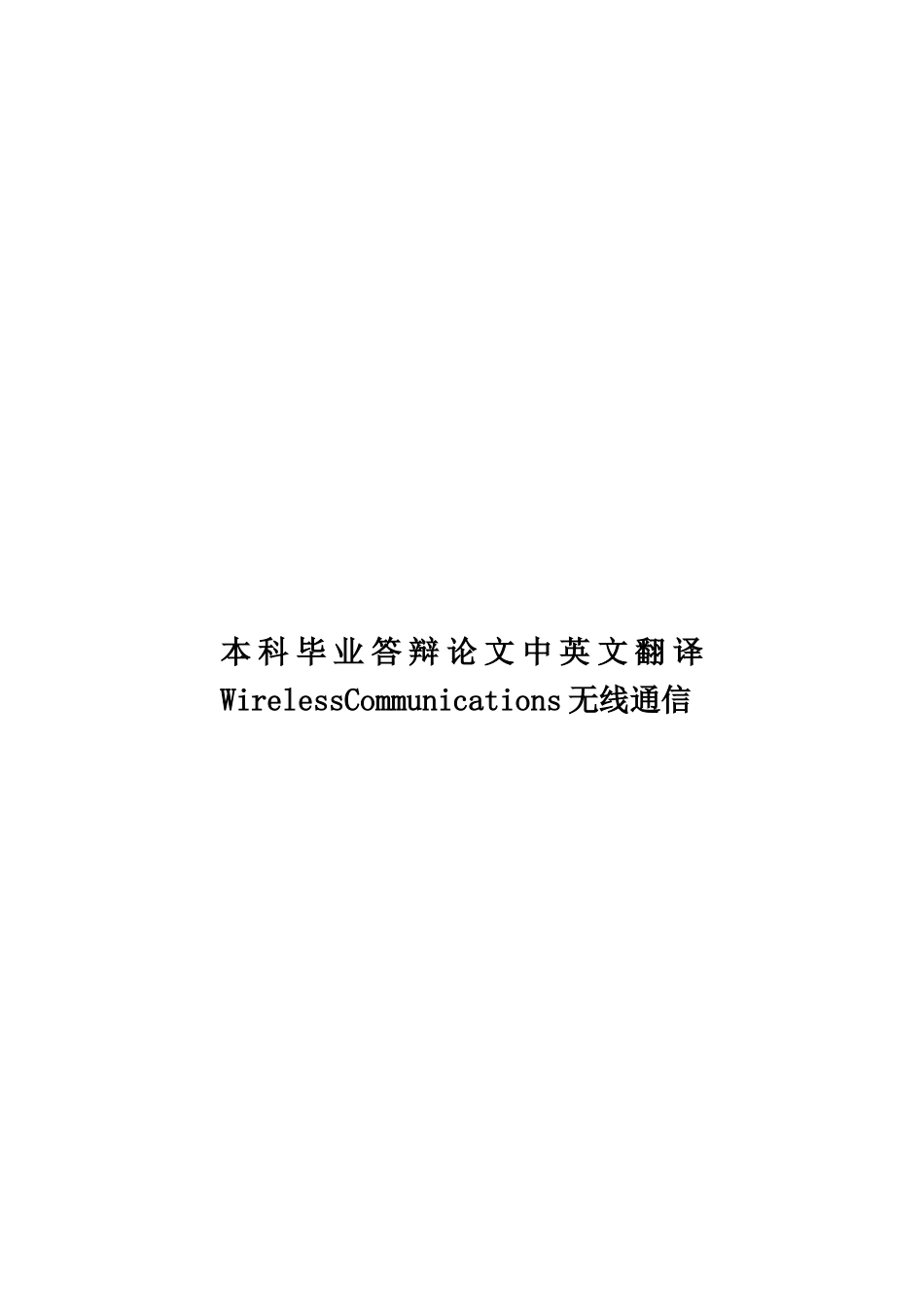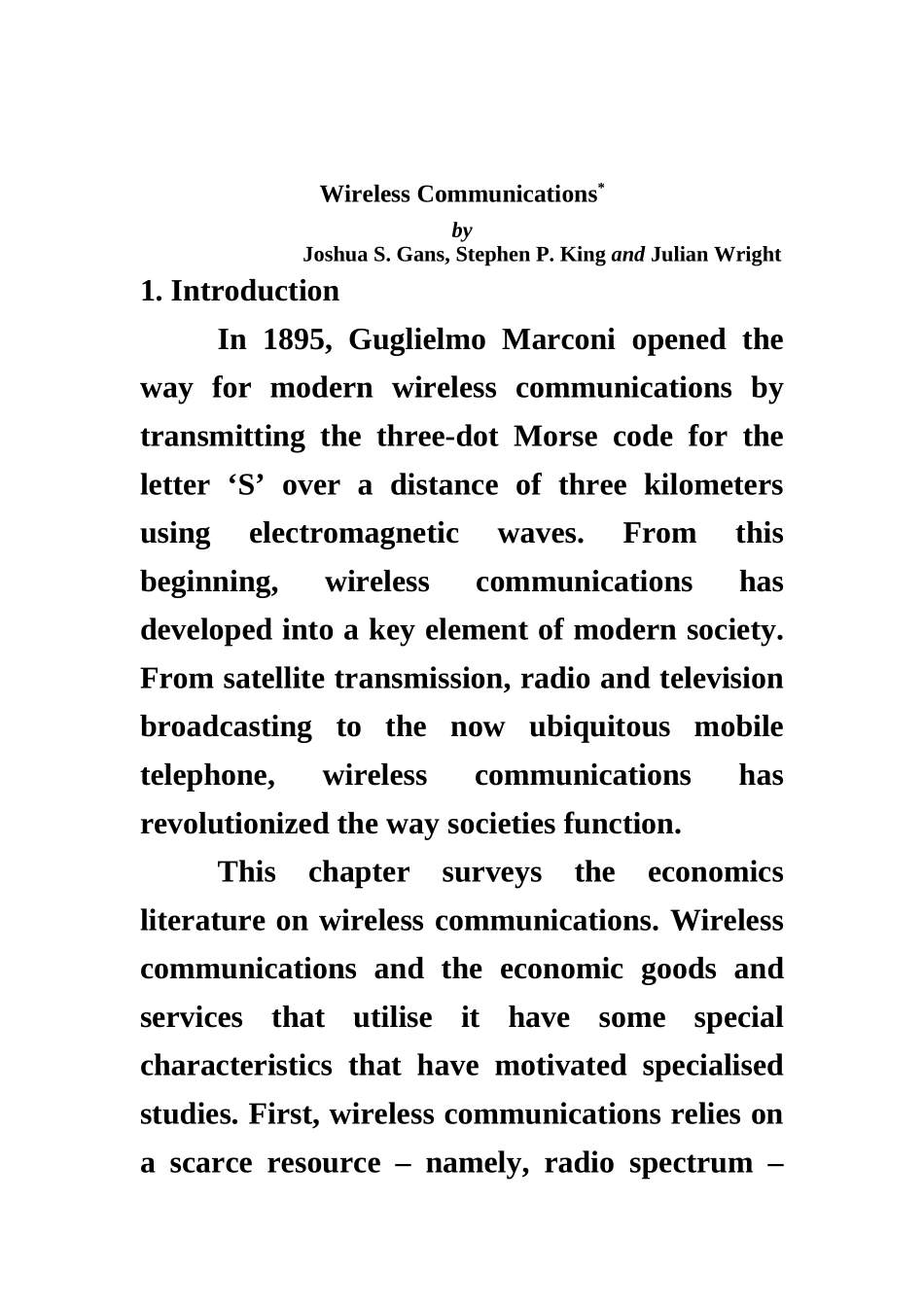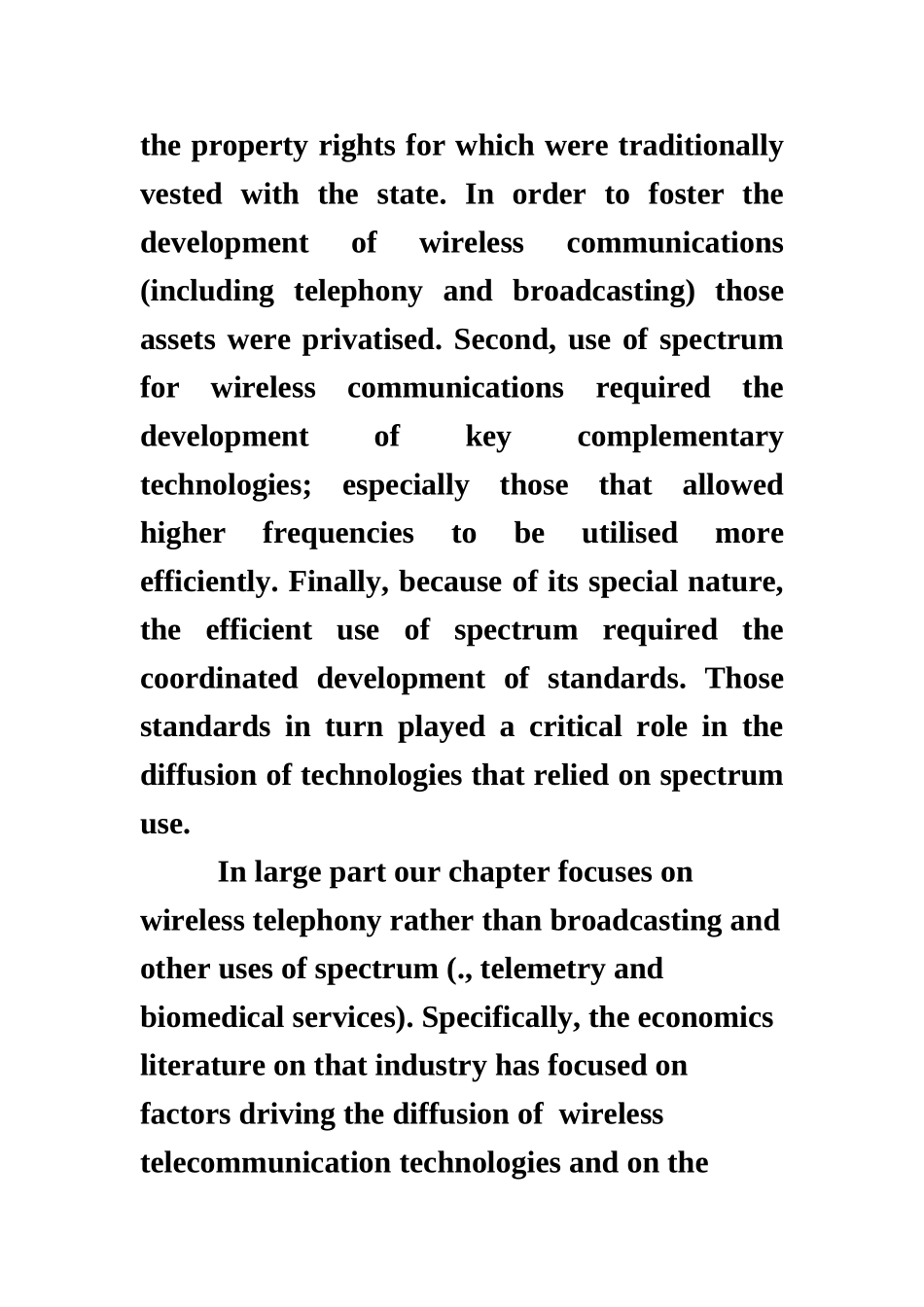本 科 毕 业 答 辩 论 文 中 英 文 翻 译WirelessCommunications 无线通信Wireless Communications* by Joshua S. Gans, Stephen P. King and Julian Wright1. Introduction In 1895, Guglielmo Marconi opened the way for modern wireless communications by transmitting the three-dot Morse code for the letter ‘S’ over a distance of three kilometers using electromagnetic waves. From this beginning, wireless communications has developed into a key element of modern society. From satellite transmission, radio and television broadcasting to the now ubiquitous mobile telephone, wireless communications has revolutionized the way societies function. This chapter surveys the economics literature on wireless communications. Wireless communications and the economic goods and services that utilise it have some special characteristics that have motivated specialised studies. First, wireless communications relies on a scarce resource – namely, radio spectrum – the property rights for which were traditionally vested with the state. In order to foster the development of wireless communications (including telephony and broadcasting) those assets were privatised. Second, use of spectrum for wireless communications required the development of key complementary technologies; especially those that allowed higher frequencies to be utilised more efficiently. Finally, because of its special nature, the efficient use of spectrum required the coordinated development of standards. Those standards in turn played a critical role in the diffusion of technologies that relied on spectrum use. In large part our chapter focuses on wireless telephony rather than broadcasting and other uses of spectrum (., telemetry and biomedical services). Specifically, the economics...


